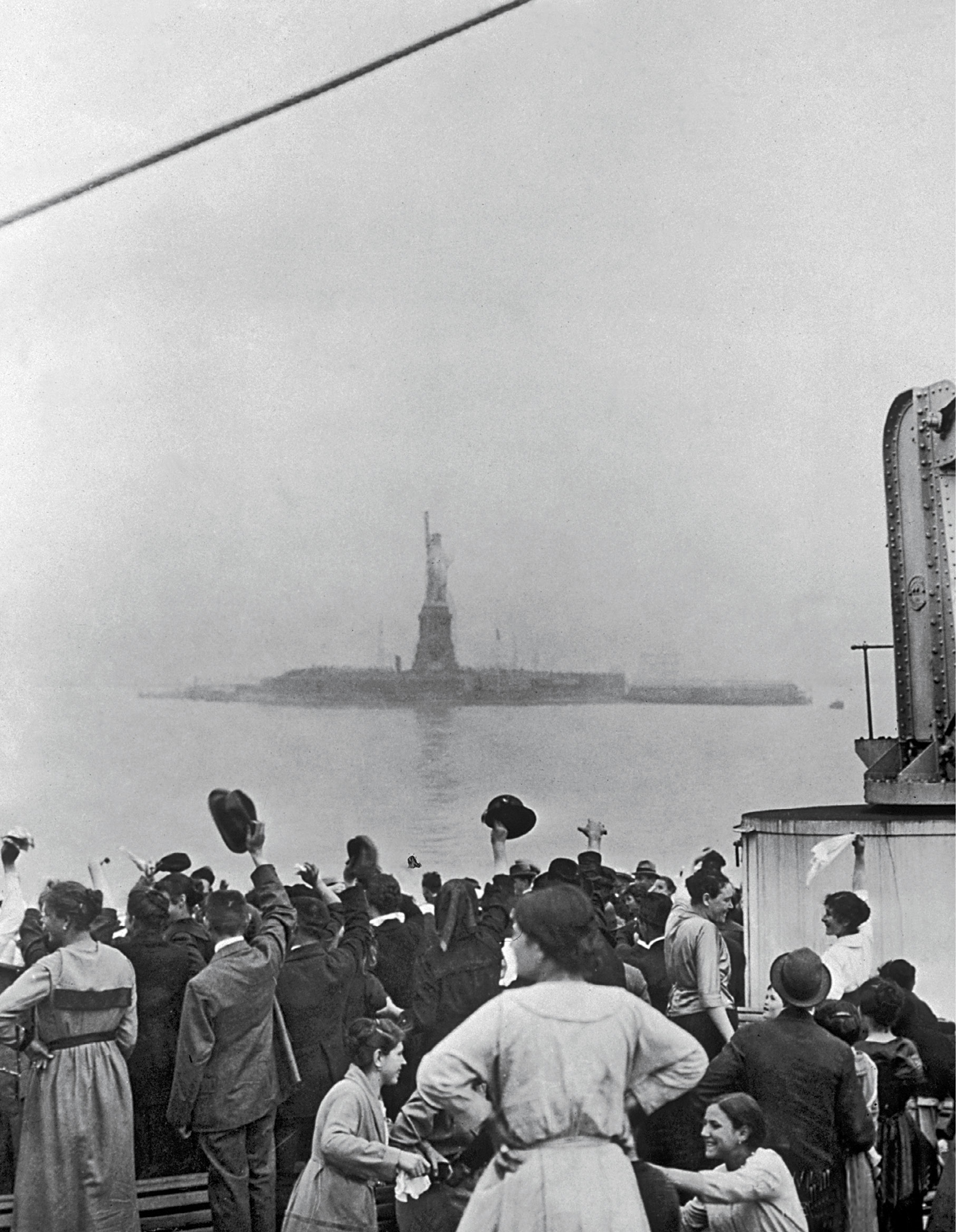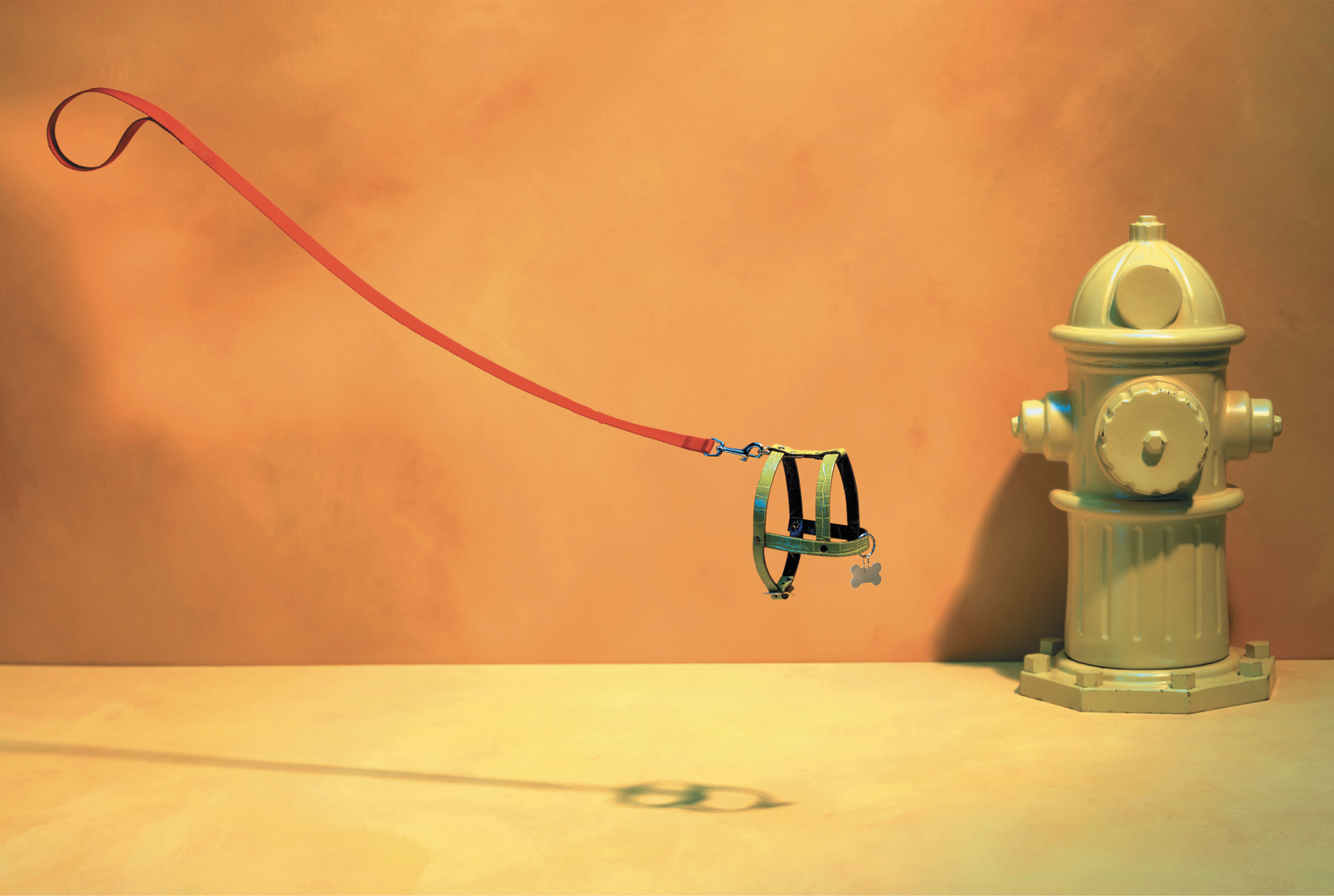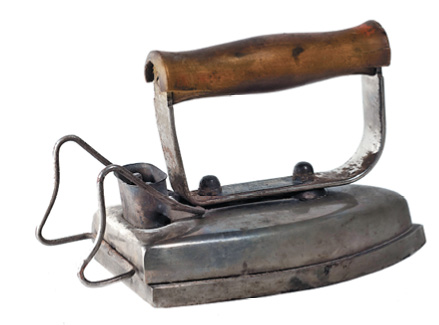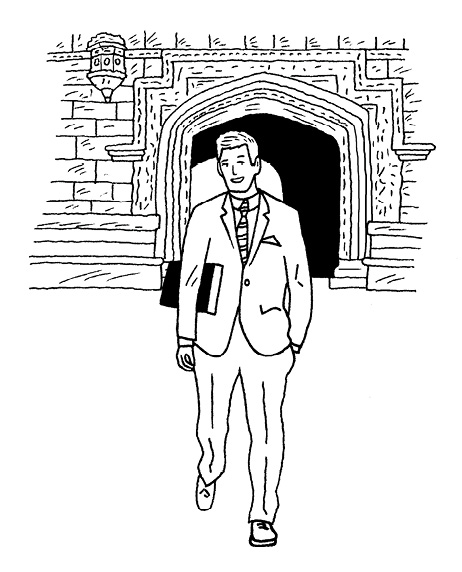

The psychoactivity of the iboga tree, a perennial rainforest shrub native to western Central Africa, was discovered by the Pygmy tribe of Central Africa, who ate its bark to induce visions and heal an assortment of ailments. They passed the knowledge on to the Bwiti tribe of Gabon, who passed the knowledge to French explorers, who brought it back to Europe. Some four decades later, French scientists extracted the main alkaloid from the iboga plant and called it ibogaine; some three decades after that, they began marketing it as a stimulant called Lambarene. But the drug also had anti-addictive properties, which were discovered in New York by a Bronx-born NYU film graduate named Howard Lotsof. Lotsof was a heroin addict who experimented regularly with hallucinogens. In 1962, when he was nineteen, he got his hands on ibogaine in the form of a white powder—which he promptly swallowed. The ensuing trip lasted thirty-two hours, during which he didn’t use heroin once. When it ended, he realized he hadn’t experienced a single withdrawal symptom. He then persuaded six heroin-addicted friends to try the drug, and afterward, five of them immediately stopped using heroin. Lotsof dedicated the rest of his life to pioneering the anti-addictive applications of ibogaine—lobbying public officials, pharmaceutical companies, and researchers and even persuading the FDA to approve a clinical trial in the mid-’90s (which was never completed due to, among other impediments, concerns over cardiotoxicity). Though the drug remains illegal in the United States, its efficacy in treating the patients who were given the chance to try it is indisputable: In the terminated trial, twenty-seven of the thirty-three subjects demonstrated significantly lower withdrawal scores and decreased opiate cravings.
It lit up Madison Square in 1892 from the north side of a hotel at 23rd Street and Fifth Avenue. Eighty feet high, that first sign spelled out MANHATTAN BEACH—SWEPT BY OCEAN BREEZES in 1,457 lightbulbs. By 1900, it had been replaced with the first such sign to advertise products: fifty-seven varieties of preserved foods and condiments, the display topped with a 43-foot-long flashing illuminated pickle that read HEINZ. The sign lasted only a few years because the edifice on which it hung was demolished. In 1902, the Flatiron Building rose in its place (see also SKYLINE).

Hoping to counteract New York City’s bad public image, the New York State tourism board in 1976 asked Milton Glaser—the graphic designer who, a decade earlier, had co-founded New York (see also NEW YORK MAGAZINE; NEW JOURNALISM)—to come up with a logo to accompany its new ad campaign. Glaser presented a typographic design that was approved by the agency Wells Rich Greene and the state’s William Doyle. A week afterward, Glaser later recalled, he was “doodling in a cab” and, with a red crayon on the back of an envelope, scratched out three letters and one glyph. When he got to a phone, he called Doyle and said, “I have something better.”
What he’d drawn was a simple rebus that, at first, might not have seemed as perfect as it turned out to be. It’s hard to convey aloud without saying “I Heart Enn Wye.” But I NY has the makings of an ideal logotype: It is concise, graspable, and cheery. From a graphic-design standpoint, it works at any size, whether on a billboard or the side of a pencil, and it is flexible because the letters can be stacked into a square or laid out in a row. Glaser gave the trademark to New York at no charge, calling it a public service for his state and his hometown.
NY has the makings of an ideal logotype: It is concise, graspable, and cheery. From a graphic-design standpoint, it works at any size, whether on a billboard or the side of a pencil, and it is flexible because the letters can be stacked into a square or laid out in a row. Glaser gave the trademark to New York at no charge, calling it a public service for his state and his hometown.
It’s knocked off everywhere now. The state of Virginia later stuck a heart into its preexisting “Virginia Is for Lovers” slogan (it became LO ERS). The heart-for-love logo is nearly universal, having been knitted into sweaters, molded into Christmas ornaments, and plastered on anything it can be plastered on. (There are some dumb versions that superimpose the word LOVE onto the heart.) Glaser’s original back-of-the-envelope taxicab sketch is now in the collection of the Museum of Modern Art. And, of course, cell-phone users communicate in such hieroglyphics all day every day in the form of emoji.
ERS). The heart-for-love logo is nearly universal, having been knitted into sweaters, molded into Christmas ornaments, and plastered on anything it can be plastered on. (There are some dumb versions that superimpose the word LOVE onto the heart.) Glaser’s original back-of-the-envelope taxicab sketch is now in the collection of the Museum of Modern Art. And, of course, cell-phone users communicate in such hieroglyphics all day every day in the form of emoji.
The first immigrants to what became the United States arrived from the west rather than the east, over the now-vanished land bridge at the Bering Strait that allowed the future native population of North America to walk over from Asia. The first people known to live in Manhattan were here about 9,000 years ago, but they moved on as the food supply became scarce. A second people, the Lenape (now often referred to as the Delaware people and principally relocated to a reservation in Oklahoma), resettled the area around 1000 B.C.E. and lived well, farming and sustaining themselves on the harbor’s abundant seafood.
The European explorers who would begin the process of driving them out first touched this land in the sixteenth and early seventeenth centuries: Giovanni da Verrazzano, Henry Hudson, Peter Minuit. Each was followed by ships, by land claims, by settlement and resettlement and trade. The first old-world descendant to live on Manhattan Island was Juan Rodriguez, a member of a Dutch trading ship’s crew who arrived in 1613. Born in the Dominican Republic to an African mother and a Portuguese father, he was thus the first Black New Yorker, the first Latino New Yorker, and the first European New Yorker. Like millions of people who came after him, he came to visit, liked it, and insisted on staying in Manhattan when the rest of his party headed home.
For the next two centuries, there was no formal procedure to admit arriving foreigners. People just disembarked and found a place to live. (Or were brought here involuntarily: Slavery was fully legal in New York until 1799 and was gradually abolished over the next thirty years.) It took a few decades after the founding of the United States to formalize “immigration” as an actual thing. Record keeping began in 1820, at which time most immigrants were from England and Scotland. The first massive wave crested during the Irish potato famine, which began in 1845. Roughly half a million Irish entered the U.S. within five years, and because New York was the country’s biggest port of entry, the lion’s share of them came through here; approximately half of those stayed in town. A hundred thousand German immigrants came over during the same period. By 1860, the foreign-born population of today’s five boroughs had topped 540,000—nearly half of the total population of 1.16 million—and was growing fast. With that volume came the need for systemization, and on August 3, 1855, the country’s first immigration center opened at the bottom tip of Manhattan. Occupying the shell of a disused fort called Castle Clinton (which had formerly been on a little island until the channel was filled in), it was called the Emigrant Landing Depot at Castle Garden and was run jointly by New York State and the city.
The numbers of immigrants were big in the 1840s and 1850s but were dwarfed by what was to come a generation later. Around 1880, the economy of Southern Europe, particularly Italy, went sour, aided by another agricultural blight and the changes wrought by the Industrial Revolution. At the same time, Eastern and Southern European Jews began to come under attack as a newly invigorated climate of anti-Semitism took hold. In both cases, people began to leave for America—not a few hundred thousand in total but a few hundred thousand per year. The port city where most of them landed could not possibly house that many people, but the city needed vast numbers of hands to fill its factory jobs and wash dishes and cut hair and lay bricks, and New York absorbed a lot of the flood. In 1860, the already immigrant-swelled population of Manhattan had been 805,658. In 1900, it was 1.44 million.
Castle Garden was soon overwhelmed. (Bad management and corruption at the center didn’t help.) At the same time, Americans’ fear of the newcomers led to concerns about the importation of disease and bad behavior. The solution was, effectively, a quarantine. A new, larger station was constructed a few hundred yards offshore on Oyster Island, so called for its abundant shellfish. Renamed Ellis Island and over time septupled in size by the addition of landfill, it became the country’s official arrival spot on January 1, 1892. The latest arrivals’ stories played out under the eye of an extremely tall immigrant Frenchwoman, sturdily built of copper and iron and carrying a torch and a tablet. The Statue of Liberty was still gleaming like a penny and nearly brand new; she had not yet acquired her green patina.
After a fire leveled the first Ellis Island structure in 1897, it was rebuilt, larger and more ornate, with an adjacent hospital added soon after. At its peak, around 1907, more than 1 million people a year came through Ellis Island—“12 new Americans a minute,” as a New York World headline put it. Newcomers were checked for illnesses (mainly tuberculosis, cholera, and trachoma, a highly contagious form of pink eye) and questioned. Are you a polygamist, an indigent, an anarchist? Most people made it through processing in a few hours, but some were kept in the island’s hospital for weeks, and a relative few were sent back overseas. (One thing Ellis Island’s clerks did not do was actively rename families. That’s a myth. The truncation and Anglicization of surnames was largely done by immigrants themselves, that scene in The Godfather Part II notwithstanding.) The first person through was an Irish teenager named Annie Moore.
The influx slowed during World War I. By then, the casual prejudice against immigrants—which had been part of their experience for a long time, starting with signs reading HELP WANTED, NO IRISH NEED APPLY in shop windows and continuing with various bans on Jews and Italians and other groups—had coupled with the increasingly robust eugenics movement, and President Calvin Coolidge was willing to go along. The Johnson-Reed Act, also known as the Immigration Act of 1924, nearly slammed the door shut. It set country-by-country quotas for future arrivals based on the rates of immigration in 1890 rather than more recent years, thus keeping out virtually all the Jews, Italians, Hungarians, and Greeks whose numbers had exploded thereafter. In the subsequent four decades, barely anyone was admitted except citizens’ relatives and a few wartime refugees. Ellis Island soon became a quiet shell of itself and was closed for good in 1954, by which time it had processed 12 million people. Forty percent of today’s Americans have an ancestor who came through there.
The tide came back in again in 1965, with federal passage of the Immigration and Nationality Act. (In a nice historical turn, Emanuel Celler, who, as a young Jewish congressman from Brooklyn had fought the passage of the 1924 act, was still in office 41 years later. He sponsored the bill, then stood at the signing alongside President Lyndon Johnson as the new law superseded the old.) The new rules didn’t throw the gates wide open, as they had been a century earlier, but they did rebalance the demographics of who was coming in. The numbers of arrivals from China, India, South Korea, Africa, and Latin America soon began to climb. They weren’t coming by ship anymore, of course; instead they came through Kennedy airport or San Francisco International, and although they were more easily settled anywhere in the country (because they could catch a connecting flight to, say, Dearborn or St. Paul), a lot of them stayed put in the big coastal cities. To take one representative population as an example, in 1960 there were 19,789 Chinese-born Americans in New York City. In 2020, there were nearly 400,000. There are more immigrants in New York now—roughly 3.1 million—than ever before.
1 Try Your Hand at Questions From the U.S. Immigration and Naturalization Test
ANSWERS

Arriving, ca. 1905.
PHOTOGRAPH BY EDWIN LEVICK
“Incubators are not a new invention,” said the New York Times on March 15, 1894. “They have been used for years with great success in hatching chickens.” Entirely new, however, was the idea of warming up a newborn premature baby, and that was what a scientist named W. G. Robinson had done in the back room of a shop on East 26th Street. Robinson was a leading surgical- instrument maker, known for his research in the very early understanding of germ theory, and had built incubators for bacterial cultures. In 1893, he learned of a baby boy, Joseph Grevert, born three months premature, and put him into what was called the “brooder,” a glass case three and a half feet long, heated to 100 degrees Fahrenheit. Its warmth was believed to have saved the child from certain death.
Less than a year later, Robinson did it again, this time for the premature daughter of a millionaire from Murray Hill named Edward Clarence Haight, whose wife had died in childbirth. This time, he got a significant amount of press owing to the prominence of the Haight family—and because Robinson later sued him for back rent on the incubator.

The invisible dog: a one-joke novelty turned curiously enduring product.
PHOTOGRAPH BY PETE MCARTHUR
There are novelty crazes that stick around past their expiration date (the Hula Hoop comes to mind) and then there are… others. Around 1972 or so, it was the invisible dog’s turn. Basically, it was a leash stiffened with a thin steel rod so you could walk around while appearing to have a pet where there was no pet. It didn’t last, but it did prompt guffaws and chortles for a few years on city streets and seaside boardwalks alike.
Two inventor-entrepreneurs laid claim to the invisible dog, though neither was exactly its creator. One was S. David Walker (such an appropriate name!), a New York novelty manufacturer who resettled in Kansas City; he’d started out as a pitchman selling trick card decks to amateur magicians and later got into the decorative-foil-balloon game early and lucratively. The other was George Zorbas, a World War II veteran who manufactured the leashes in a Brooklyn factory at 51 Bergen Street. (The building now houses an arts center called the Invisible Dog.) But the invisible dog made his first nonappearance well before that. In 1963, Allen Funt came up with the idea and constructed one for Candid Camera, his prankster TV show that pioneered an entire genre. In the segment, an actor walks the streets of New York with his petless leash as startled bystanders gape and a hidden movie camera catches their reactions.

A clothes iron—a “flatiron,” colloquially—used to be a triangular slab of metal that you heated on a fire, repeatedly, as you worked. The New Yorker Henry Seely, an associate of Thomas Edison, was the man who figured out that tucking an electrical resistance element inside would heat up the tool flamelessly. He and his business partners, R. N. Dyer and Samuel Insull, received the patent on June 6, 1882. The world has been ever so slightly less wrinkly ever since.
The term for the athletic association of eight elite universities in the Northeast (Harvard, Yale, Princeton, Brown, Cornell, Dartmouth, the University of Pennsylvania, and Columbia) is newer than you think. Most histories credit a sportswriter from the New York Herald Tribune named Caswell Adams, citing his use of the term in print, slightly disparagingly, for the first time in 1937. But a few references precede his. Stanley Woodward, a colleague of Adams’s on the Trib’s sports desk, had used the term ivy colleges a couple of years earlier, and a 1935 AP story about Brown University’s induction into the group referred to it as “the so-called ‘Ivy League’ ” that was “in the process of formation.” Given that both the AP and the Trib were just a few blocks apart in midtown, the term didn’t have to travel far to gain wider use. The eight schools signed their football- league agreement in 1945 and finally started playing under that name in 1956.
By then, the name Ivy League was established to denote not just the universities’ athletic teams but the exclusive schools themselves, becoming colloquial shorthand for the ruling elite. As such, the term even extended to a style of men’s clothing. The “Ivy League suit,” a.k.a. the sack suit—an unflashy, single-breasted American cut, usually with three buttons (the top one unused and only half visible behind a rolled lapel), straight out of the window display at Brooks Brothers or J. Press—came to dominate businesswear in the 1950s and 1960s in large part through its association with the eastern American Establishment, as epitomized by the Kennedys. Its popularity has waxed and waned in the decades since, but it never disappears. A story told at Brooks Brothers involves a customer who returned a new suit several years back after the pants had worn out prematurely. It turned out he’d accidentally switched them with those from an almost indistinguishable suit he had purchased in 1957.
2 The Definitive Details of the Ivy League Suit
Described by J. Press chief merchandising officer Robert Squillaro

“The suit that has been traditionally worn by Ivy League attendees and grads is the classic three-roll-two undarted ‘sack’ suit. It features lightweight internal components, a natural shoulder, and a center hook vent. The trousers are flat front. Solid colors, subtle stripes, or plaids are the patterns of choice.”